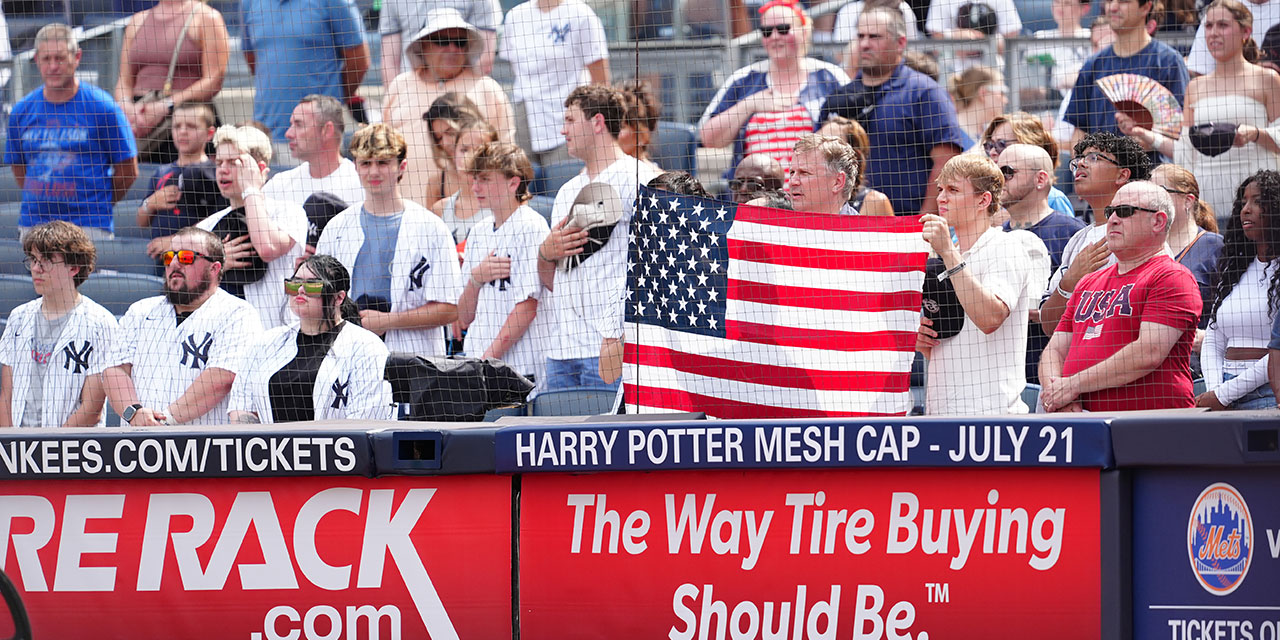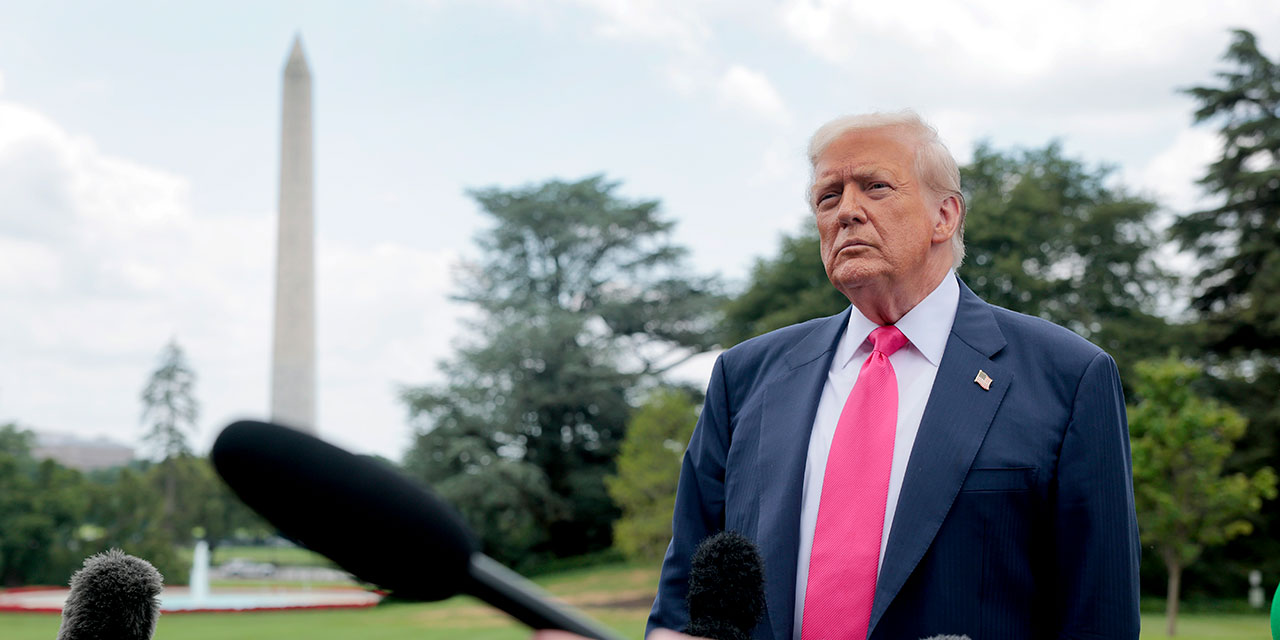Whatever its effects on polls, Tuesday night’s vice presidential debate between Ohio senator J. D. Vance and Minnesota governor Tim Walz offered a window into some of the deeper forces shaping this campaign, and American politics generally.
It’s a truism that vice presidential debates rarely move the needle. People vote for the top of the ticket, not the undercard. Since Kamala Harris’s entry into the race in July, the presidential battle has been very close, and last night’s debate might not change that. A CNN instant poll found that a statistically insignificant 1 percent of respondents said that the debate changed their mind about their vote. On points, many pundits gave the debate decisively to Vance. The Ohio senator was polished and disciplined throughout, while Walz stumbled out of the gate. He seemed unprepared for some obvious questions (most notably in his blinking response when asked why he falsely said that he was in Hong Kong during the Tiananmen Square massacre). The only moment Democrats seem happy about was Walz pressing Vance on whether he believed that Donald Trump won the 2020 election.
Finally, a reason to check your email.
Sign up for our free newsletter today.
The debate potentially reveals longer-term trends and structural issues with the campaigns. Walz’s performance dramatizes the growing political costs of Harris’s Rorschach candidacy. On his selection as running mate, Walz seemed an ebullient presence in national media, generating one viral clip after the next. Now, he is locked away from the press, consistent with Harris’s determination to be a blank slate for voters. His resulting lack of practice hurt him Tuesday night. Vance, by contrast, has conducted daily media appearances (many with hostile interviewers) for the past two months, akin to ongoing CrossFit-level training in debate.
The vagueness demanded by the Harris campaign also created a vision deficit for Walz. As with Harris in last month’s presidential debate, Walz at first tried to pivot to an attack on Trump whenever he was asked about a specific policy. Without Trump’s explosive presence on the debate stage, that strategy fell flat and instead signaled the amorphousness of Harris’s agenda. For instance, Walz repeatedly underscored Harris’s support for the failed Senate border bill, but that’s not the same thing as offering an immigration agenda.
Conversely, last night’s debate revealed the strategic utility of the Vance pick: having someone on the ticket who can speak with both passion and precision. On health care, housing, immigration, and other issues, Vance weaved a relatively coherent policy vision. Over the past few years, some Republicans have adopted a Trumpian affect while championing standard Republican policies. Vance inverted that approach. He filed off some of his sharp edges and was notably respectful toward Walz (a respect that was reciprocated), but he also laid out a broad case for reinvigorated efforts to address the concerns of working families.
Responding to the first debate question, Vance talked about his background. The debate was a chance to reintroduce himself to voters and to engage the Republican electorate. His combination of a soft-focus approach and specificity on policy likely helped him on both counts. Whatever their significance in November, vice presidential debates can have big implications for the political futures of the running mates themselves. The one-liner that Lloyd Bentsen directed at Dan Quayle in the 1988 debate (“Senator, you’re no Jack Kennedy”) cast a long shadow over Quayle’s political career. Vance’s strong performance could energize the Republican base and help soften some of his negatives with swing voters. Vance’s ability to spar cooly with the moderators, who continued to intervene on Walz’s behalf, thrilled online conservative warriors.
Though often shaky, Walz never suffered a complete meltdown, so this debate alone likely doesn’t disqualify him as a contender in later cycles, if he and Harris lose in November. Nevertheless, Harris’s lock-him-in-the-broom-closet campaign strategy hasn’t helped position the Minnesota governor for any future bid for national office.
Beyond campaign dynamics, the debate also shed some light on the underlying structural factors of American politics. Though Walz and Vance drew policy contrasts, they also emphasized their agreement on some points, such as the need to build more housing and do more to support families. Vance denounced expanding trade with the People’s Republic of China as a danger to working families; Walz agreed. President Joe Biden has extended many of Trump’s tariffs on goods from China.
Such areas of agreement could be a sign of a broader realignment toward a resilience paradigm: renewing industrial infrastructure, strengthening family formation, and reforging the civic compact. Both parties might disagree about exactly how to accomplish those ends, but a project of internal reinforcement could also help inspire some collaboration across the aisle.
Perhaps the most surprising feature of the debate was its tone. Walz and Vance treated each other like fellow citizens and human beings—not rabid animals or enemies of the state. They shook hands, introduced their wives after the debate, and showed basic courtesy. This is a major break from the sociopathic toxicity that dominates politics online and the angry exchanges that have characterized recent presidential debates, where mutual loathing has often prevailed.
Adopting this more humane style played to both Vance’s and Walz’s advantages. Americans are increasingly disgusted by the cramped vitriol of contemporary political debates, and the most successful politicians in swing states—such as Pennsylvania Democrat Josh Shapiro or Georgia Republican Brian Kemp—triumph partly because they have rejected it. The CNN poll showed a major boost in the approval numbers of both Walz and Vance post-debate. The electorate expects more than rancor from its leaders.
The civility of the Vance–Walz debate also suggests that the nastiness of American politics over the past decade may not be structural but instead freely chosen. Our own political distemper is in part a colossal failure of statecraft and prudence. Policy substance intersects with civic style, too. Some common ground on policy might perhaps lead to healthier politics.
Photo by CHARLY TRIBALLEAU/AFP via Getty Images




